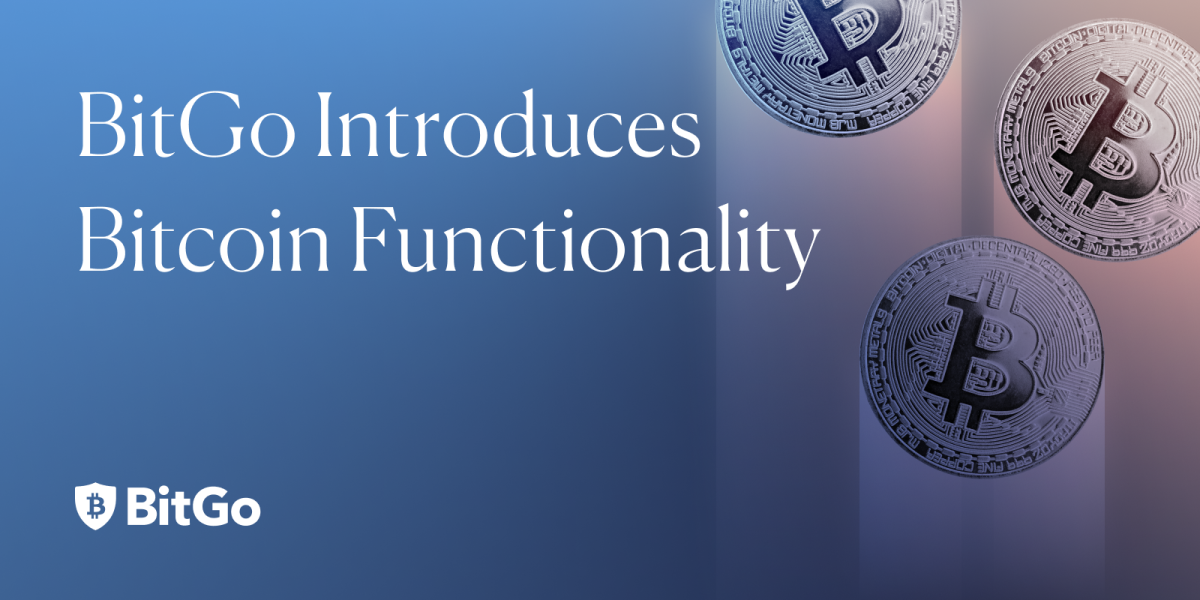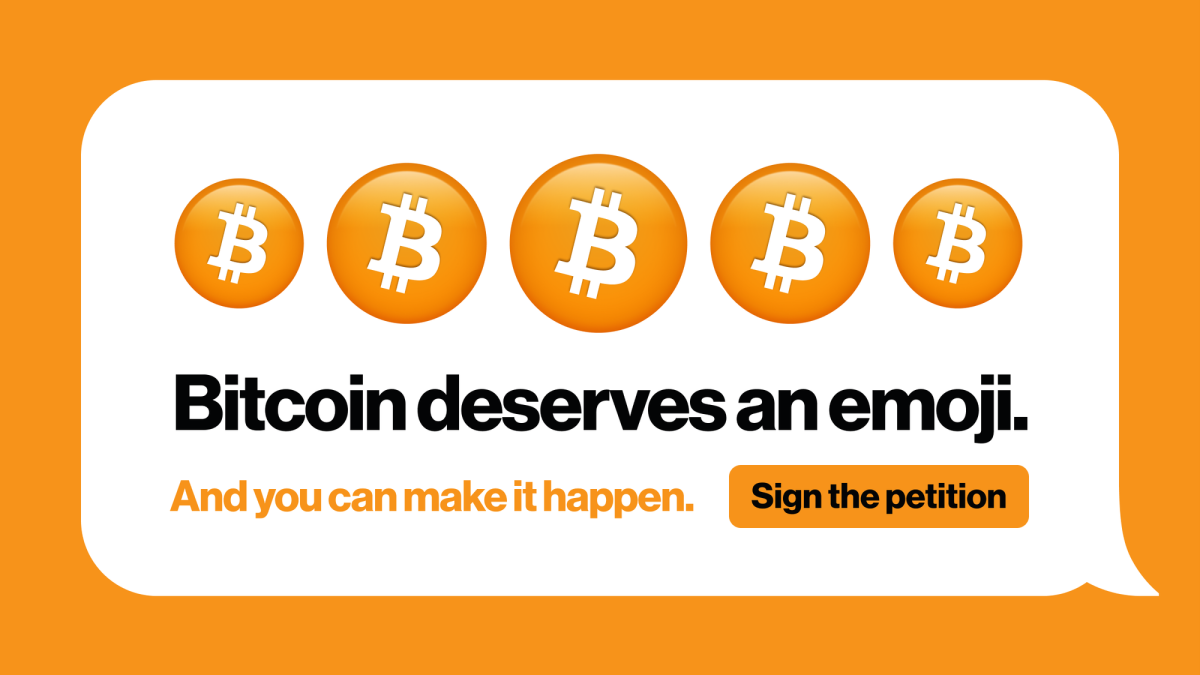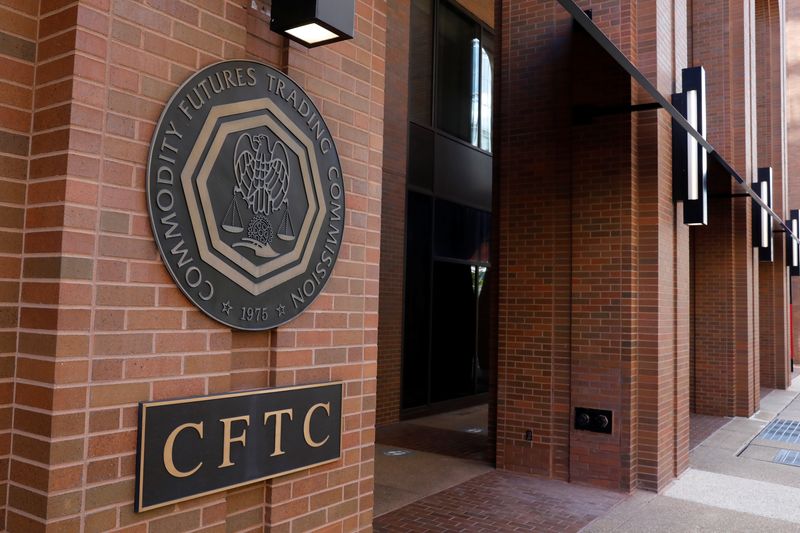Month: March 2024
Saving Seeds in DNA: Bitcoin as Information
I recently converted a Bitcoin seed phrase into a DNA sequence, just because I can. Using only the first four letters of the BIP39 seed words, a 12-word seed phrase can be stored in a mere 48 nucleotides of DNA. (For comparison, the average gene is several thousand nucleotides long, and the complete human genome contains over 3 billion nucleotides). Any genetics graduate student could, in just a few days, turn my seed word sequence into an actual strand of DNA and insert that DNA into E. coli or some other suitable host for storage (and propagation) inside a living organism.
DNA is just one modality for storing and transmitting information. There are numerous other ways to do so and once information is widely distributed it is nearly impossible to extinguish, which is why it will be impossible to stop Bitcoin on a global scale with regulation, legislation, or even violence. The mere fact that you can store a bitcoin private key in DNA demonstrates the futility of attempting to ban Bitcoin. Once unleashed, information is hard to contain.
But why is information so hard to contain? Perhaps because information is a fundamental entity of the universe. For centuries scientists thought the universe was made only of matter and energy. Today, we know it is made of matter, energy, and information. Information can be stored in matter and transmitted using energy, but information itself is neither. Einstein showed us that matter and energy are interchangeable (E=mc2) but in toto cannot be created nor destroyed. By contrast, information can be created and destroyed, but neither is easy. And once information is created and widely distributed, it is increasingly difficult to destroy.
The Parts of Information
Information is meant to be sent and received between two or more parties. It is done with a purpose by the sender and is meant to spur action in the receiver. There are five hierarchical components to information:
FidelitySyntax (code or grammar)Semantics (meaning)Pragmatics (action)Apobetics (purpose)
Fidelity
Fidelity is the lowest element of information, but it is absolutely necessary for successful transmission. It was once a major issue for cell phone and internet communication. Remember the “Can you hear me now?” commercial? With technical advancements, low fidelity eventually became high fidelity (which weirdly became wireless fidelity, or Wi-Fi). Generally, we are not concerned with fidelity unless it is lacking. (Can you hear me now?)
The Code and Language
Syntax refers to the code or grammar used for transmitting information. A code is a set of symbols that represent temporally or spatially interconnectable bits of information. That is, symbols can be strung together in time or space to achieve the next level of information (semantics). The symbols used can vary tremendously. They include, among other things, the letters that make up an alphabet, hand gestures (e.g., American Sign Language), musical notes (e.g., those old modem connections and touch tone phones), or the nucleotides in DNA and RNA. The number of symbols used can vary, as well. Most alphabets use 20-35 letters, the nucleotide code uses four chemicals (abbreviated A, U, C, and G), and the binary code employed by computers has just two symbols (0 and 1) representing the on and off states. The number and type of symbols employed are not selected randomly. For instance, they may be determined by the mode of transmission or to meet a specific need (Table 1).
Table 1: Symbols may be chosen for mode of transmission or to meet a specific need.
A common code is essential for information to be successfully communicated. That is, the code must be known to both the sender and the receiver. Also, because the code is not itself the information but merely the purveyor of information, any particular code can be translated to any other code. For example, written human languages can be translated from one to another:
Go tell it on the mountain…
Va le dire sur la montagne…
Ve a contario en la montaña…
The above phrase can also be translated, using human eyes, brain, and mouth, from symbols on a page into sound waves (acoustic symbols) in the air, which can be picked up by a microphone and converted to electrical signals in wires and then to radio waves transmitted through space to be picked up by an antenna on the space station, turned back into electrical signals, and then converted by a speaker back into sound waves to be heard by the ears of another human. In the ears of our human astronaut, the signal is converted from waves of air to waves of fluid in the cochlea and then to electrical nerve impulses carried to the brain to be interpreted by neurons. In the brain, those neurons somehow make sense of the original string of symbols, which brings us to the next level of information: semantics or meaning.
Semantics, Pragmatics, and Apobetics
Semantics is the meaning or intent of a message (a string of symbols). The allocation of meaning to symbols is a mental process. This doesn’t happen at the machine level but at the human level. When you read a book, you are not interested in fidelity (unless it is lacking) or syntax (unless the grammar is horrible or it’s a language you do not understand). Instead, you are interested in the meaning conveyed by the message, i.e., the semantics. Although computers can store and transmit information with ease, and can even perform logic operations via transistors, they cannot meaningfully interpret information the way a human can. Do raspberry pi nodes, hardware wallets, or ASICs understand Bitcoin the way a human does? I think not.
The aim of meaningful communication is to prompt some action in the recipient. This aim for action represents the pragmatic level of information. The reason the sender wishes to prompt this response is the purpose of the information, which is the apobetic level of information. These highest levels of information require genuine intelligence on both parties, even a will. Whether or not computers can ever possess a will remains to be seen.
“Go tell it on the mountain…” is a string of symbols (code) that create a meaningful message (semantics) with the sender expecting (apobetics) some response from the receiver (pragmatics). The message can only be received if transmitted adequately (good fidelity).
Bitcoin as Information
Bitcoin (the program) is computer code written in a particular coding language. From the software to the blockchain to the key pairs of wallets, bitcoin is information. This information can be stored, transmitted, and replicated in flash drives, printed books, or DNA molecules. Because it is now so widely dispersed, it is virtually impossible at this point to destroy. Politicians and bankers may not like it, but the genie is out of the bottle and cannot be stopped now. As they say, you cannot ban Bitcoin, you can only ban yourself from using Bitcoin.
Fidelity and syntax are the operational parts of information. Semantics, pragmatics, and apobetics are the higher levels of information concerned with the purpose and response of intelligent beings based on the meaning of the message. In Bitcoin, fidelity – or clarity of transmission – is achieved by the internet (and has even been accomplished by HAM radio) connecting a network of nodes, miners, and wallets. The syntax of Bitcoin consists of the coding languages used to write and execute Bitcoin Core and related software on those devices. The meaning, or semantics, of Bitcoin is a perfectly scarce, immutable, digital token. The highest purposes of Bitcoin – the pragmatics and apobetics – are demonstrated in the users that run miners, nodes, and wallets who are motivated and seeking to secure their wealth from theft, either by robbery or debasement.
The internet is now a mature and high-fidelity communication system. It cannot be destroyed without simultaneously destroying humanity as we know it. The computer codes and languages utilized by Bitcoin are sufficiently distributed such that eliminating them is essentially impossible. But even if you could somehow destroy the fidelity and syntax of the network, the idea of Bitcoin – the semantics, pragmatics, and apobetics – is too widely distributed to defeat. At this point, it has found its way into the minds of millions of people around the globe. Perhaps you could destroy the internet and every last hard drive holding the blockchain and every last computer running Bitcoin, but you would have to hunt down every last Bitcoiner to eradicate the idea of Bitcoin. And who knows, due to the ungovernable actions of some mad scientist, you might have to hunt down all the E. coli, too.
This is a guest post by Daniel Howell. Opinions expressed are entirely their own and do not necessarily reflect those of BTC Inc or Bitcoin Magazine.
Bitcoin Hits New Heights Between BlackRock Success and London Approval
The below is an excerpt from a recent edition of Bitcoin Magazine Pro, Bitcoin Magazine’s premium markets newsletter. To be among the first to receive these insights and other on-chain bitcoin market analysis straight to your inbox, subscribe now.
Bitcoin has had another period of intense and record-breaking success, spurred on both by positive developments in international business and by increasingly large commitments from the spheres of traditional finance.
It’s truly stunning how well Bitcoin has been performing throughout the first quarter of 2024. The year began with Bitcoin’s valuation crossing the $40k mark, and March 1 saw a persistent hover around $60k. Now, however, Bitcoin has gone up to $72k, the highest valuation in its entire history. Although we still are not quite at the level where “digital gold” is more valuable than gold itself, we have even reached a new milestone: by market cap, Bitcoin is currently a more valuable commodity than silver. Considering the immense role that silver has played in global currency for thousands of years, this is certainly a milestone to remember.
This period of success has been especially noteworthy for the continued confidence it’s been enjoying from some of the largest financial institutions in the world. On March 10, for example, it was reported that BlackRock, the world’s largest asset manager and prominent issuer of the Bitcoin spot ETF, had finally acquired enough bitcoin that it surpassed even the holdings of MicroStrategy. Considering that its board chairman, Michael Saylor, is such a Bitcoin evangelist, this development seemed especially huge. It was an even bigger surprise, however, when Saylor announced that he was buying enough to reclaim its leading position the very next day. Less than 24 hours passed between this original announcement and MicroStrategy’s purchase of 12k bitcoin, and this purchase took place when Bitcoin was already enjoying a price point over $70k. This purchase put MicroStrategy at the head of nearly every other private bitcoin stockpile, from all publicly traded miners to several major exchanges and ETF issuers.
It’s a stunning display of confidence in Bitcoin that anyone is prepared to make such major investments at a time when it’s never been more expensive. It seems that the mood in these companies is that the all-time highs of today will seem like a paltry sum in just a few years. Analysts from ETF issuer Bitwise, for example, were confident enough in their prediction that corporate entities representing trillions of dollars would begin ramping up investments that Bitwise’s Chief Investment Officer released an official memo on the subject. Claiming “serious due diligence” conversations with everyone from hedge funds to massive corporations, the memo predicts that Q2 will see even more massive inflows than the first three months of the year. This just leaves us with one question: Where does this kind of confidence come from?
The center of the issue seems to be the runaway success of the Bitcoin ETF and, in particular, BlackRock’s dominating position over the main issuers. Initially, it struggled with Grayscale, which had several natural advantages: it was a Bitcoin-native company with a massive stockpile, it was a real leader in the legal battle to actually get SEC approval, its GBTC was a previously-existing fund that was converted into an ETF, and it had other tricks up its sleeve. Nevertheless, BlackRock is the ETF that reached $10 billion faster than any other in history, shooting ahead of all other Bitcoin competitors and indeed all ETFs in general. Much of this revenue came from users fleeing GBTC’s high fees, and it seems like a confident industry leader today. Its success has even matured to the international stage, as Mudrex, a crypto investment platform based in India, is opening up BlackRock ETF sales to institutional and private investors in a country with more than 1 billion people.
This kind of success from BlackRock in particular has also led some of its competitors to change up their tactical approach. VanEck, for example, made an announcement on March 11 that they were waiving all fees on their Bitcoin ETF for an entire year. This will only continue so long as their VanEck Bitcoin Trust is under $1.5 billion, but the fees after this window will still be some of the lowest available. Grayscale, for its part, is also seeking to address the problem of high fees by spinning off a “mini-version” of its ETF, offering fractions of Bitcoin for a fraction of GBTC’s fees. It seems that BlackRock’s competitors are not yet willing to concede a market with such tremendous growth potential.
However, although the ETF market has been especially hot lately, that is not the only reason to believe that Bitcoin’s doing so well. ABC News, for example, credits some positive developments from the United Kingdom as a major factor in Bitcoin’s price jump. Britain has previously been considered a particularly hostile regulatory environment for Bitcoin, especially the ETF, trailing behind both Western Europe and most of the Anglosphere in official Bitcoin approval. It was quite a surprise, then, when the London Stock Exchange (LSE) released a new factsheet on exchange-traded notes (ETNs), deciding that this type of financial instrument would be offered on their platform.
ETNs do differ substantially from ETFs, even those like the Bitcoin futures ETF, which has no direct link to Bitcoin itself. ETNs are a type of debt security and do not even include the proviso that the issuer actually holds the bitcoin in question. Still, they are directly tied to the value of Bitcoin and offer investors a way to gain exposure to the world’s leading digital asset. Considering that these ETNs are subject to the stringent rules that govern securities, it’s particularly interesting that the LSE has suddenly changed its tune on Bitcoin-related financial products. In other words, it seems that the sea change in legal Bitcoin spot ETFs in the United States has undeniably changed the calculus for businesses worldwide. With all these billions flowing into the Bitcoin ETF, even an unfriendly regulator like Great Britain must join in the bonanza if it wishes to maintain relevance as a leading hub of global finance.
These are just a few of the developments that have occurred in the world of Bitcoin, as the intersection between decentralized currency and traditional finance has become both broader and deeper. Looking forward, there are still plenty of upcoming events, like the halving predicted in April, to keep propelling the hype forward. It may be difficult to predict exactly where the next major development and price jump will come from, but right now it looks as if there is a growing faith coming from some true financial giants. Bitcoin has come an incredibly long way since the days of its total pariah status, and now there’s well over a trillion dollars in the market. With growth like that, it’s an easy win to keep betting on Bitcoin.
BitGo Rolls Out RBF Integration for Faster Bitcoin Transaction Processing
BitGo, a prominent provider of Bitcoin wallets and custody solutions, has unveiled a new enhancement to its platform with the introduction of Replace-By-Fee (RBF) integration, according to a press release sent to Bitcoin Magazine. This new feature is designed to increase the speed of Bitcoin transaction processing, offering users greater flexibility and control over their transactions.
RBF enables users to replace transactions that are stuck in process with higher fees, thereby incentivizing miners to confirm them promptly on-chain. Available across BitGo’s range of wallets, including hot wallet, qualified custody, and self custody bitcoin wallet options, RBF integration marks a another big milestone in BitGo’s ongoing efforts to provide advanced features and functionalities to its users.
The introduction of RBF brings several benefits to Bitcoin users. Firstly, it provides greater transaction flexibility, allowing users to adjust fees dynamically to accelerate confirmation, particularly during periods of high network congestion. This enhanced flexibility contributes to a smoother and more efficient transaction experience, empowering users to navigate the complexities of the Bitcoin network with confidence.
As part of the RBF integration, BitGo users will now have access to a range of new features and functionalities. These include the ability to signal for RBF in withdrawals, accelerate low-fee stuck transactions using RBF, and view replacement details on transfers accelerated via RBF. Additionally, BitGo will automatically signal for RBF in internal management transactions, such as consolidations and fanouts, to facilitate easy acceleration if needed.
The integration of RBF aligns with BitGo’s dedication to providing the latest features and functionalities for its users. It enhances transaction management capabilities and contributes to a seamless and efficient user experience. As RBF becomes increasingly standard in Bitcoin wallets, BitGo intends to remains at the forefront of empowering users to navigate the complexities of the Bitcoin network with confidence and ease.
Dollar steady after strong CPI; GBP treads water with data dump in focus
Post Content
Canadian dollar weakens as hot U.S. CPI raises prospect of delayed Fed rate cuts
Post Content
Over 25 Leading Bitcoin Companies Rally for Official Bitcoin Emoji
Today, more than 25 leading Bitcoin organizations joined forces under the banner of the ‘Bitcoin Deserves an Emoji’ movement. Spearheaded by Nexo, this global initiative is dedicated to securing an official Bitcoin emoji for digital keyboards everywhere, signaling a monumental step toward recognizing Bitcoin’s multifaceted role in society as a revolutionary technology, a form of money, and a cultural phenomenon.
“Bitcoin’s journey reflects a remarkable blend of innovation and community,” stated Kosta Kantchev, Co-founder & Executive Chairman of Nexo. “It’s time its significance is recognized universally, starting with a symbol we all understand – an emoji. Join us in making history.”
The coalition comprises a diverse group of participants including prominent entities such as Bitcoin Magazine parent company BTC Inc, Bitget, Brink, Chainalysis, Hacken, Nansen, and Unstoppable Domains. Together, they aim to celebrate and advocate for Bitcoin’s integration into the digital lexicon through the universal language of emojis.
“Bitcoin is universal money for the world, it needs a universal emoji for every person, young and old to use,” said BTC Inc CEO David Bailey.
The campaign kicks off with a 50-day petition hosted on Change.org, culminating in an official submission to the Unicode Consortium within the 2024 submission window. This concerted effort marks a renewed push for recognition, building on previous attempts and highlighting the growing importance of Bitcoin in our daily lives.
Emojis have evolved from their origins in Japan in the 1990s to become foundational elements of digital communication, transcending linguistic and geographical barriers. According to Unicode, 92% of internet users worldwide use emojis in their digital communications. The campaign for a Bitcoin emoji is more than symbolic—it’s a movement to cement Bitcoin’s status as an essential component of modern digital and financial ecosystems worldwide.
“Supporting Bitcoin’s development has always been about paving the way for future innovation. An official emoji is more than a symbol; it’s a nod to Bitcoin’s technological impact on the world,” said Mike Schmidt, Executive Director of Brink.
The initiative invites everyone to join this community-driven effort. For more details and to become part of the campaign, visit the initiatives website here.
Bitcoin Exchange Relai Integrates Lightning Network For Its 100,000 European Users
Relai, the Swiss-based Bitcoin app with a self-custody wallet, has announced a new partnership with Blockstream and Breez to integrate the Lightning Network into its platform, benefiting over 100,000 European users, according to a press release sent to Bitcoin Magazine.
The Lightning Network offers a scalable solution to facilitate fast and low-cost transactions, making Bitcoin more suitable for everyday use. By leveraging Lightning, Relai aims to streamline Bitcoin payments for its growing user base, empowering them to send and receive bitcoin directly to their wallets in a self-custodial manner.
“Bitcoin is sound money. Lightning is the future of Bitcoin,” said Relai CEO Julian Liniger. “It’s how money will be moved around the world in the 21st century. That’s why Lightning is a strategic focus of Relai and will be integral to our mission of bringing BTC to millions of people quickly, easily, and securely!”
Partnering with industry giants Blockstream and Breez, Relai aims to ensure seamless integration and optimal user experience. Blockstream’s Greenlight cloud nodes and Breez SDK’s Lightning Service Providers (LSPs) enable Relai to offer Lightning’s benefits while maintaining non-custodial control over users’ funds.
The integration of Lightning into Relai’s platform is just the beginning of its product expansion and European expansion plans, according to the release. Relai aims to obtain the MiCA license to extend its services throughout Europe, marking a big step towards its goal of making Bitcoin accessible to millions of users across the continent.
Bitcoin on Wheels: The Story of Bitcoinetas
You may have seen that picture of Michael Saylor in a bitcoin-branded van, with a cheerful guy right next to the car door. This one:
Ariel Aguilar and La Bitcoineta European Edition at BTC Prague.
That car is the Bitcoineta European Edition, and the cheerful guy is Ariel Aguilar. Ariel is part of the European Bitcoineta team, and has previously driven another similar car in Argentina. In fact, there are currently five cars around the world that carry the name Bitcoineta (in some cases preceded with the Spanish definite article “La”).
Argentina: the original La Bitcoineta
The story of Bitcoinetas begins with the birth of ‘La Bitcoineta’ in Argentina, back in 2017. Inspired by the vibrancy of the South American Bitcoin community, the original Bitcoineta was conceived after an annual Latin American Conference (Labitconf), where the visionaries behind it recognized a unique opportunity to promote Bitcoin education in remote areas. Armed with a bright orange Bitcoin-themed exterior and a mission to bridge the gap in financial literacy, La Bitcoineta embarked on a journey to bring awareness of Bitcoin’s potential benefits to villages and towns that often remained untouched by mainstream financial education initiatives. Operated by a team of dedicated volunteers, it was more than just a car; it was a symbol of hope and empowerment for those living on the fringes of financial inclusion.
The concept drawing for La Bitcoineta from December 2017.
Ariel was part of that initial Argentinian Bitcoineta team, and spent weeks on the road when the car became a reality. The original dream to bring bitcoin education even to remote areas within Argentina and other South American countries came true, and the La Bitcoineta team took part in dozens of local bitcoin meetups in the subsequent years.
The original La Bitcoineta from Argentina.
One major hiccup came in late 2018, when the car was crashed into while parked in Puerto Madryn. The car was pretty much destroyed, but since the team was possessed by a honey badger spirit, nothing could stop them from keeping true to their mission. It is a testament to the determination and resilience of the Argentinian team that the car was quickly restored and returned on its orange-pilling quest soon after.
Argentinian Bitcoineta after a major accident (no-one got hurt); the car was restored shortly after.
Over the more than 5 years that the Argentinian Bitcoineta has been running, it has traveled more than 80,000 kilometers – and as we’ll see further, it inspired multiple similar initiatives around the world.
Follow La Bitcoineta’s journey:
Twitter: https://twitter.com/labitcoineta
Instagram: https://www.instagram.com/bitcoineta/
El Salvador: Bitcoin Beach
In early 2021, the president of El Salvador passed the Bitcoin Law, making bitcoin legal tender in the country. The Labitconf team decided to celebrate this major step forward in bitcoin adoption by hosting the annual conference in San Salvador, the capital city of El Salvador. And correspondingly, the Argentinian Bitcoineta team made plans for a bold 7000-kilometer road trip to visit the Bitcoin country with the iconic Bitcoin car.
However, it proved to be impossible to cross so many borders separating Argentina and Salvador, since many governments were still imposing travel restrictions due to a Covid pandemic. So two weeks before the November event, the Labitconf team decided to fund a second Bitcoineta directly in El Salvador, as part of the Bitcoin Beach circular economy. Thus the second Bitcoineta was born.
Salvadoran’s Bitcoineta operates in the El Zonte region, where the Bitcoin Beach circular economy is located.
The eye-catching Volkswagen minibus has been donated to the Bitcoin Beach team, which uses the car for the needs of its circular economy based in El Zonte.
Follow Bitcoin Beach:
Twitter: https://twitter.com/Bitcoinbeach
South Africa: Bitcoin Ekasi
Late 2021 saw one other major development in terms of grassroots bitcoin adoption. On the other side of the planet, in South Africa, Hermann Vivier initiated the Bitcoin Ekasi project. “Ekasi” is a colloquial term for a township, and a township in the South African context is an underdeveloped urban area with a predominantly black population, a remnant of the segregationist apartheid regime. Bitcoin Ekasi emerged as an attempt to introduce bitcoin into the economy of the JCC Camp township located in Mossel Bay, and has gained a lot of success on that front.
Bitcoin Ekasi was in large part inspired by the success of the Bitcoin Beach circular economy back in El Salvador, and the respect was mutual. The Bitcoin Beach team thus decided to pass on the favor they received from the Argentinian Bitcoineta team, and provided funds to Bitcoin Ekasi for them to build a Bitcoineta of their own.
Bitcoin Ekasi’s Bitcoineta as seen at the Adopting Bitcoin Cape Town conference.Bitcoin Ekasi’s Bitcoineta as seen at the Adopting Bitcoin Cape Town conference. Hermann Vivier is seen in the background.
South African Bitcoineta serves the needs of Bitcoin Ekasi, a local bitcoin circular economy in the JCC Camp township.
Bitcoin Ekasi emerged as a sister organization of Surfer Kids, a non-profit organization with a mission to empower marginalized youths through surfing. The Ekasi Bitcoineta thus partially serves as a means to get the kids to visit various surfer competitions in South Africa. A major highlight in this regard was when the kids got to meet Jordy Smith, one of the most successful South African surfers worldwide.
Coincidentally, South African surfers present an intriguing demographic for understanding Bitcoin due to their unique circumstances and needs. To make it as a professional surfer, the athletes need to attend competitions abroad; but since South Africa has tight currency controls in place, it is often a headache to send money abroad for travel and competition expenses. The borderless nature of Bitcoin offers a solution to these constraints, providing surfers with an alternative means of moving funds across borders without any obstacles.
Photo taken at the South African Junior Surfing Championships 2023. Back row, left to right:
Mbasa, Chuma, Jordy Smith, Sandiso. Front, left to right: Owethu, Sibulele.
To find out more about Bitcoineta South Africa and the non-profit endeavors it serves, watch Lekker Feeling, a documentary by Aubrey Strobel:
Follow Bitcoin Ekasi:
Twitter: https://twitter.com/BitcoinEkasi
Fundraiser: https://support.bitcoinekasi.com/
Europe: Bitcoineta Europa
The European Bitcoineta started its journey in early 2023, with Ariel Aguilar being one of the main catalysts behind the idea. Unlike its predecessors in El Salvador and South Africa, the European Bitcoineta was not funded by a previous team but instead secured support from individual donors, reflecting a grassroots approach to spreading financial literacy.
European Bitcoineta sports a hard-to-overlook bitcoin logo along with the message “Bitcoin is Work. Bitcoin is Time. Bitcoin is Hope.”
The European Bitcoineta is a Mercedes box van adorned with a prominent Bitcoin logo and inspiring messages, and serves as a mobile hub for education and discussion at numerous European Bitcoin conferences and local meetups. Inside its spacious interior, both notable bitcoiners and bitcoin plebs share their insights on the walls, fostering a sense of camaraderie and collaboration.
Inside the European Bitcoineta, one can find the wall of fame, where visitors can read messages from prominent bitcoiners such as Michael Saylor, Uncle Rockstar, Javier Bastardo, Hodlonaut, and many others.On the “pleb wall”, any bitcoiner can share their message (as long as space permits).
Follow Bitcoineta Europa’s journey:
Twitter: https://twitter.com/BitcoinetaEU
Instagram: https://www.instagram.com/bitcoinetaeu/
Ghana: Bitcoineta West Africa
Embed: https://youtu.be/8oWgIU17aIY?si=hrsKmMIA7lI6jX4k
Introduced in December 2023 at the Africa Bitcoin Conference in Ghana, the fifth Bitcoineta was donated to the Ghanaian Bitcoin Cowries educational initiative as part of the Trezor Academy program.
Bitcoineta West Africa was launched in December 2023 at the Africa Bitcoin Conference. Among its elements, it bears the motto of the Trezor Academy initiative: Bitcoin. Education. Freedom.
Bitcoineta West Africa was funded by the proceeds from the bitcoin-only limited edition Trezor device, which was sold out within one day of its launch at the Bitcoin Amsterdam conference.
With plans for an extensive tour spanning Ghana, Togo, Benin, Nigeria, and potentially other countries within the ECOWAS political and economic union, Bitcoineta West Africa embodies the spirit of collaboration and solidarity in driving Bitcoin adoption and financial inclusion throughout the Global South.
Bitcoineta West Africa surrounded by a group of enthusiastic bitcoiners at the Black Star Square, Accra, Ghana.
Follow Bitcoineta West Africa’s journey:
Twitter: https://twitter.com/BitcoinetaWA
Instagram: https://www.instagram.com/bitcoinetawa/
—
All the Bitcoineta cars around the world share one overarching mission: to empower their local communities through bitcoin education, and thus improve the lives of common people that might have a strong need for bitcoin without being currently aware of such need. As they continue to traverse borders and break down barriers, Bitcoinetas serve as a reminder of the power of grassroots initiatives and the importance of financial education in shaping a more inclusive future. The tradition of Bitcoinetas will continue to flourish, and in the years to come we will hopefully encounter a brazenly decorated bitcoin car everywhere we go.
If the inspiring stories of Bitcoinetas have ignited a passion within you to make a difference in your community, we encourage you to take action! Reach out to one of the existing Bitcoineta teams for guidance, support, and inspiration on how to start your own initiative. Whether you’re interested in spreading Bitcoin education, promoting financial literacy, or fostering empowerment in underserved areas, the Bitcoineta community is here to help you every step of the way. Together, we will orange pill the world!
This is a guest post by Josef Tetek. Opinions expressed are entirely their own and do not necessarily reflect those of BTC Inc or Bitcoin Magazine.
US CFTC to publish rule on vertically integrated models by summer, says chair
Post Content
Asia FX muted as dollar steadies before CPI data; Yen retreats
Post Content









